When student demonstrators overran the U.S. embassy in Tehran on November 4, 1979, the world did not know how Iran’s new revolutionary government would respond. Just nine months earlier, Iran’s own deputy prime minister had led a contingent of Revolutionary Guards to end a similar siege and put the embassy facility back under American control. In November, however, the Iranian government’s official response was limited to a statement of sympathy for the students—an approach directed by the Ayatollah Ruhollah Khomeini, whose supporters had spent the prior year gradually consolidating control throughout the country. “[T]he action taken today by a group of our countrymen,” the statement said, “reflect[s] the feeling of the Iranian nation toward the U.S. government’s disregard,” specifically in relation to its recent decision to admit the deposed shah of Iran into the United States for medical treatment.
These words were more than just a rhetorical jab. By refusing to intervene as the embassy facility and dozens of Americans located there were taken hostage, the Iranian government was violating a widely respected set of international legal rules that plays a foundational role in international relations. Within days, what was arguably Iran’s last secular government resigned in protest over this response, formally ceding control to Khomeini’s Revolutionary Council. This not only ended any hopes for a quick resolution to the crisis, but set the stage for a sudden and severe rupture in what had been one of the region’s defining bilateral relationships—and a growing divide between Iran and the international community.
The international legal dispute that resulted from the Iran hostage crisis continues to have ramifications to this day in how Iran and the United States interact. Yet in recent years, the parties’ positions have taken an ironic twist. Whereas the United States used international law to help set revolutionary Iran on the path to becoming a pariah state, it has since severed its own ties to many of the international legal institutions that it once relied upon for this purpose. And while revolutionary Iran fervently rejected any external intervention, contemporary Iran has increasingly sought the international community’s help in securing relief from various U.S. policies it claims are unlawful.
Bringing the Hostage Crisis to Court
The initial U.S. response to the fall of the embassy—followed a day later by the seizure of abandoned U.S. consular facilities in Shiraz and Tabriz—was surprisingly muted. U.S. officials hoped Iranian authorities would once again step in to resolve the situation, and quietly set about trying to open diplomatic channels for negotiations. As these hopes dimmed, the United States began to freeze U.S.-based Iranian assets and install other economic measures to secure some leverage over the Iranian government. And it initiated a more aggressive diplomatic strategy aimed at mobilizing the international community in opposition to Iran’s actions.
 Pursuant to this strategy, the United States submitted a claim to the International Court of Justice (ICJ) on November 29, 1979, alleging that Iran’s failure to oppose the student demonstrators’ actions violated certain key international legal obligations regarding the treatment of foreign embassies and diplomatic personnel. Officials initially hoped to pair this claim with U.N. Security Council resolutions multilateralizing the economic sanctions it had already imposed on Iran, but their efforts to secure anything more than rhetorical opposition to Iran’s actions were stymied by Russia’s veto. This left the ICJ as the main channel of recourse within the U.N. system.
Pursuant to this strategy, the United States submitted a claim to the International Court of Justice (ICJ) on November 29, 1979, alleging that Iran’s failure to oppose the student demonstrators’ actions violated certain key international legal obligations regarding the treatment of foreign embassies and diplomatic personnel. Officials initially hoped to pair this claim with U.N. Security Council resolutions multilateralizing the economic sanctions it had already imposed on Iran, but their efforts to secure anything more than rhetorical opposition to Iran’s actions were stymied by Russia’s veto. This left the ICJ as the main channel of recourse within the U.N. system.
The U.S. claims were rooted in the Vienna Convention on Diplomatic Relations(VCDR) and Vienna Convention on Consular Relations (VCCR), two multilateral treaties that codify long-standing rules regarding diplomatic and consular relations between states, including obligations to respect the inviolability of foreign embassies and diplomatic personnel. The United States also cited certain standards of treatment in a 1955 Treaty of Amity, Economic Relations, and Consular Rights, which Iran and the United States had signed shortly after a controversial U.S.-backed coup d’etat restored the shah to power following a prior period of political unrest. All three treaties subjected relevant disputes to the compulsory jurisdiction of the ICJ—the Treaty of Amity directly, and the VCDR and VCCR through separate optional protocols. This provided the United States with the hook it needed to bring its claim before the ICJ, whose jurisdiction is limited to circumstances consented to by the parties.
Despite these prior commitments, Iran refused to participate in the ensuing proceedings. Instead, in a short written response, it argued that the ICJ “should not take cognisance of the case” on the grounds that the hostage crisis was simply “a marginal and secondary aspect of an overall problem,” namely the “more than 25 years of continual interference by the United States in the internal affairs of Iran.” As such interference “is essentially and directly a matter within the national sovereignty of Iran,” Iran contended, the ICJ should decline to exercise jurisdiction.
The court was not persuaded. Just two weeks later, it unanimously granted a U.S. request for provisional measures that directed Iran to return the hostages and embassy facility to American control in order to avoid any more irreparable damage to U.S. interests while the court weighed its claim. It followed up with a full judgment in May 1980, which also found that the United States was entitled to reparations in a form and amount to be determined. Only two judges dissented from this latter holding, on the grounds that the United States had also violated its own international legal obligations both by imposing increasingly stringent economic sanctions and pursuing the failed April 1980 rescue attempt, which the dissenters viewed as tantamount to an unlawful military attack on Iran.
The ICJ’s ruling was a legal landmark, as it not only reaffirmed the fundamental importance of the legal protections provided by the VCDR and VCCR but rejected the prospect that American malfeasance, even if proven, could justify Iran’s actions. And while the decision did little to bring about an immediate end to the crisis, it contributed to revolutionary Iran’s growing international isolation by highlighting the extent to which it had departed from widely accepted international norms. Further, if the United States were awarded reparations, the ICJ’s decision could well threaten Iran’s frozen overseas assets, which the United States could attempt to claim in its effort to collect. Both consequences were notable—and as Iran’s relations with its neighbor Iraq rapidly deteriorated over the course of 1980, they became sources of serious concern.
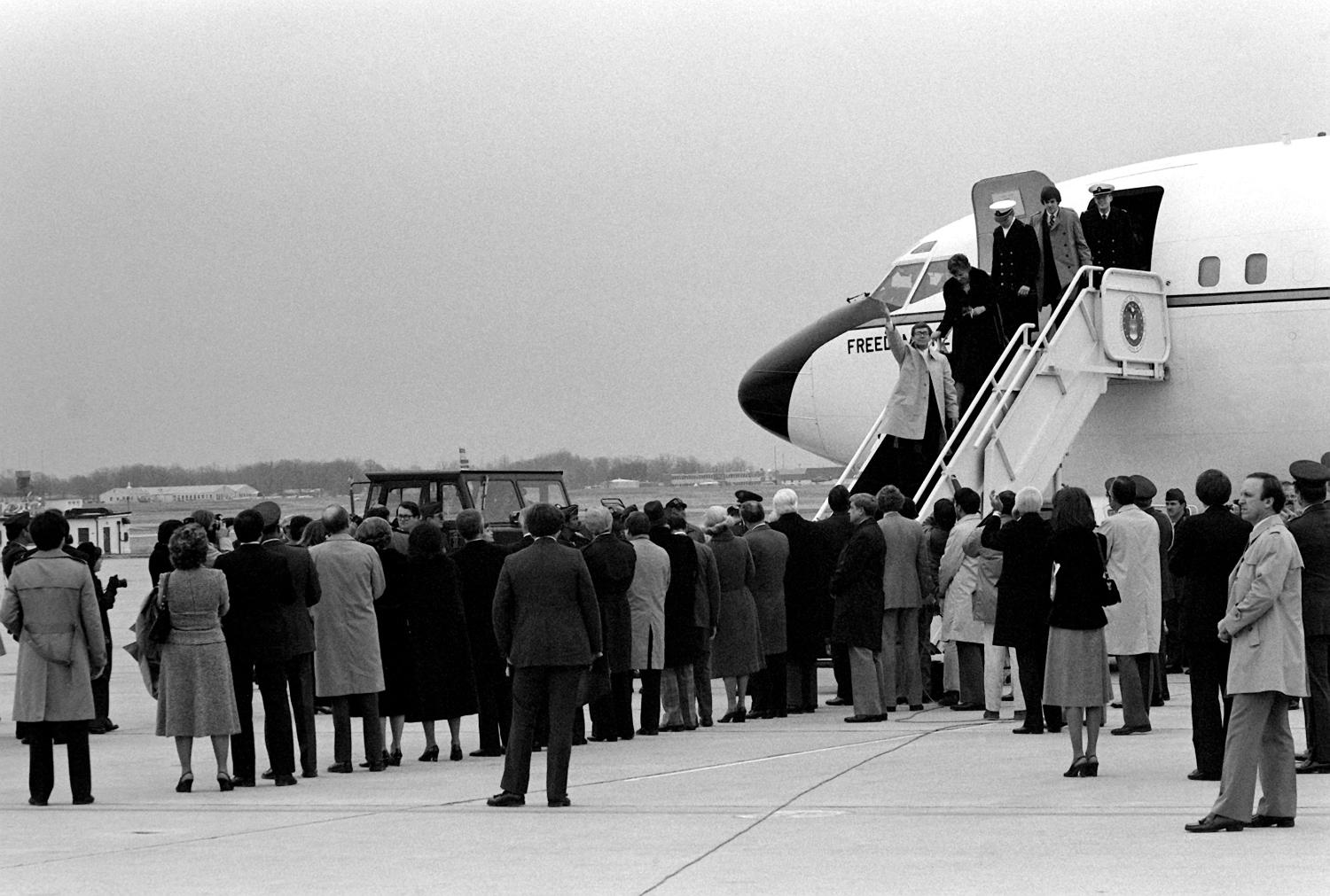
Reaching Settlement
As war with Iraq grew more inevitable, the Iranian government became more intent on retrieving its frozen assets and stabilizing its global position. By the time of the Iraqi invasion in September 1980, it had finally begun to engage the United States in negotiations over the hostages. On January 19, 1981, these efforts—with help from the Algerian government—yielded agreement on a set of commitments to end the hostage crisis, dubbed the Algiers Accords. In exchange for the release of the hostages, the United States agreed to return a portion of Iran’s frozen assets, settle any remaining legal claims—including those by the hostages themselves—arising from the hostage crisis, and avoid future interference in Iran’s internal affairs. The hostages were released a few days later. And per the terms of the agreement, the United States withdrew its ICJ claims within the year.
Nor were these the only claims that the Algiers Accords addressed. The sudden disruption in economic ties brought about by the Iranian revolution had left private citizens on both sides with an array of property claims against each others’ governments, ranging from contract violations to alleged expropriations. And Iran’s revolutionary government had leveled similar allegations against the United States itself in relation to the once robust arms sales program that had existed between the two countries. Yet neither government was willing to submit itself to the domestic courts of the other, and the claims themselves were too complex to resolve through negotiations in any timely fashion. For this reason, the parties decided to pursue a more novel disposition: They channeled these claims into a new independent adjudicatory body created specifically for the purpose, called the Iran-U.S. Claims Tribunal (IUSCT).
Established later that year in The Hague, the nine-member IUSCT—which consists of three members appointed by each party and an additional three selected by those appointees—was given jurisdiction over all relevant bilateral property claims that were outstanding when the agreement was signed, as well as disputes regarding the interpretation and implementation of the Algiers Accords themselves. To ensure this jurisdiction was exclusive, the parties also agreed to bar any related domestic litigation by private parties—a controversial step whose constitutionality was challenged in U.S. courts but ultimately upheld. As a result, the IUSCT became the only venue through which Americans and Iranians whose property rights were damaged as a result of the revolution could pursue recompense. And to ensure funds were available to pay the resulting claims, the parties agreed to channel half of Iran’s restored assets into an account specifically designated for that purpose.
Over the ensuing four decades, the IUSCT has quietly pursued its mandate under the Algiers Accords, providing an early model for the growing field of international arbitration. By May 2016, it had resolved around 4,000 claims, resulting in the transfer of about $2 billion to U.S. parties and $1 billion to Iranian parties, leaving only large state-to-state claims unresolved. In January of that year, Iran and the United States settled one such claim relating to funds that pre-revolutionary Iran had deposited into a trust fund for potential arms sales,restoring $400 million to Iran along with $1.3 billion in interest. The remaining claims are large and complex, leading one departing tribunal member to posit that they could still take decades to resolve.
Trading Places
As the IUSCT has gone about its work, the broader legal relationship between Iran and the United States has shifted. Since the 1980s, the United States has increasingly used its central position in the global economy to put economic pressure on Iran to stop its support for terrorism and nascent nuclear program. The primary mechanism for this effort has been economic sanctions that impose domestic legal penalties on entities that do business in the United States—or are in some cases even further removed from the U.S. economy—but try to maintain various prohibited ties with Iran. Congress has also enacted exceptions to U.S. sovereign immunity laws that make Iran and other state sponsors of terrorism subject to terrorism-related lawsuits in U.S. courts, resulting in awards of more than $50 billion in damages against Iran. Tehran has refused to dignify many of these claims by opposing them in court, a stance that has produced judgments for claims as dubious as Iranian involvement in the September 11th attacks. Congress has occasionally made Iranian assets, sanctions-related proceeds, or other funds available to satisfy these outstanding judgments, but the sheer scale of the damages has left most judgment-holders with no clear way of securing compensation.
Unlike during the hostage crisis, [Iran] has repeatedly turned to the international community in pursuit of relief.
Iran has not taken these measures lying down. To the contrary, unlike during the hostage crisis, it has repeatedly turned to the international community in pursuit of relief. In the 1990s, Iran argued before the IUSCT that economic sanctions and other U.S. policies violated the obligation not to interfere with Iran’s internal affairs set forth in the Algiers Accords. And it’s relied on the Treaty of Amity to bring a number of claims before the ICJ. Most notably, in 2015, it argued that an American law making certain frozen Iranian assets available to U.S. judgment-holders violated the Treaty of Amity and other international legal obligations—a case that the court has ruled that it has the jurisdiction to consider on the merits in part. And when the Trump administration re-imposed economic sanctions following its highly controversial 2018 withdrawal from the Joint Comprehensive Plan of Action (JCPOA) regarding Iran’s nuclear program, Iran filed a Treaty of Amity-based claim similarly seeking to prohibit those actions. The ICJ rejectedIran’s request for provisional measures ordering an end to these sanctions in October 2018, but did require exceptions for certain humanitarian goods and civil aviation-related equipment—all of which the United States maintains are already eligible for exemptions. Both cases remain ongoing.
Until recently, the United States appeared content to dutifully respond to these claims and defend the legality of its policies. But in October 2018, the Trump administration responded to the ICJ ruling on provisional measures in the JCPOA case by announcing that the United States was withdrawing from the Treaty of Amity, effective in one year pursuant to the treaty’s terms. Later that day, it also withdrew from the optional protocol for the Vienna Convention on Diplomatic Relations, following the same path of action that George W. Bush administration had pursued to withdraw from the VCCR’s optional protocol in 2005. Together, these acts officially severed the last of the legal ties that the United States had relied on to pursue its hostage claims before the ICJ. Both of Iran’s existing ICJ claims will proceed, as will any other claims it files under the Treaty of Amity before the U.S. withdrawal goes into effect. But future disputes related to these treaties will not fall within the ICJ’s jurisdiction. Whether this will result in a new set of claims before the IUSCT remains to be seen.
The Trump administration has been careful to make clear that it still views the substantive obligations of the VCDR and VCCR as legally binding. In February 2019, it even recorded a video message to the Iranian people showing that it was still maintaining the abandoned Iranian embassy building in Washington, D.C., pursuant to its VCDR obligations—a sharp contrast with how Iran has treated the former U.S. embassy building in Tehran, which is now an anti-American museum displaying official documents and other items looted from the site in flagrant violation of the VCDR. But Trump administration officials have been equally explicit that they have no interest in subjecting U.S. policies to the scrutiny of “politicized and ineffective” international institutions like the ICJ.
History Lessons
From the perspective of history, there is some irony in this shift. Iran’s refusal to defend the legality of its actions during the hostage crisis reinforced the extent to which it was willing to spite the international community, and set it on the road to becoming a global pariah. Now that Iran is seeking to repair its international status, it has turned to the ICJ to try and paint the United States as an “outlaw regime” whose unilateral campaign against Iran similarly spits in the face of international law—a narrative that the Trump administration’s resistance to ICJ scrutiny only serves to reinforce. The parallels should not be overstated: Iran’s current claims stand on far weaker legal grounds than the U.S. hostage claims, and U.S. efforts to limit the ICJ’s jurisdiction are entirely consistent with international law. Nonetheless, there may be lessons to be drawn from the two states’ prior experiences.
Since its controversial 2018 withdrawal from the JCPOA, the United States has stood largely alone when it comes to Iran.
True pariah status is a long way off for the United States. But since its controversial 2018 withdrawal from the JCPOA, the United States has stood largely alone when it comes to Iran. The U.N. Security Council removed multilateral sanctions on Iran when it endorsed the JCPOA in 2015 and has declined to reinstate them, in large part because Iran is widely believed to remain in compliance with the JCPOA’s terms. European allies who wish to preserve the JCPOA have gone so far as to establish a special purpose vehicle to allow European companies to trade with Iran without triggering reimposed U.S. economic sanctions. Yet this has not stopped the Trump administration from pursuing its unilateral “pressure campaign”—one officially aimed at ending the various objectionable activities Iran engages in that were not covered by the JCPOA, but that the Trump administration often discusses in terms that sound like regime change.
Whether this effort succeeds will ultimately depend on the extent to which the United States can either coerce or persuade the international community into cooperating. Thus far the Trump administration has focused on the former, but there may be limits on how far even the United States can leverage its global economic and political power. Pursuing the latter, however, almost certainly would require demonstrating how U.S. policies are consistent with the international legal regime that helps protect the interests of various members of the international community—and adjusting those policies accordingly where they do not. This does not necessarily require submitting to ICJ jurisdiction, but it does require serious consideration of the international community’s concerns. Revolutionary Iran’s failure to take this account has cost it more than four decades of international isolation. And while the United States is unlikely to face as severe a consequence, the Trump administration’s unwillingness to learn from Iran’s example may prove no less self-defeating.
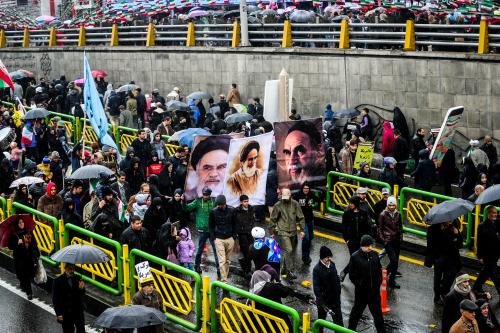
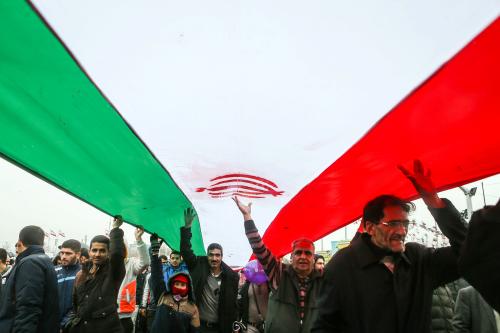
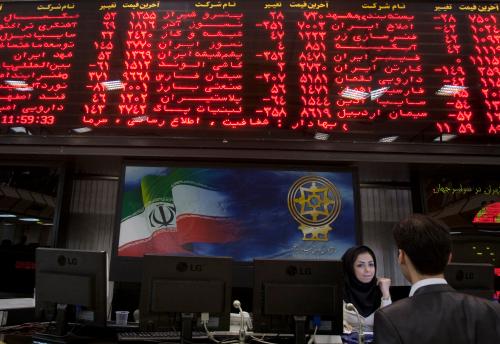
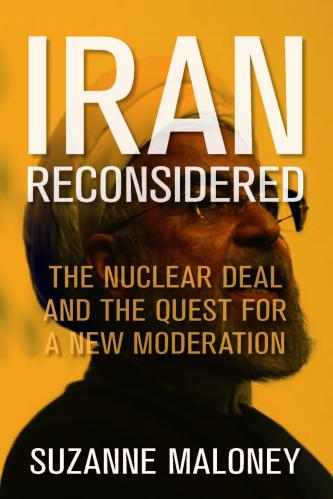



Commentary
Op-edInternational law and the Iranian revolution
April 2, 2019